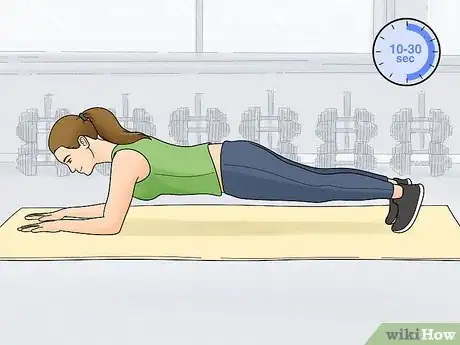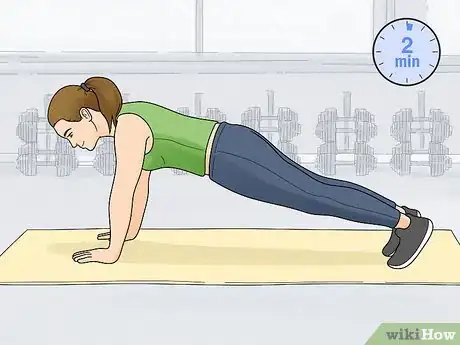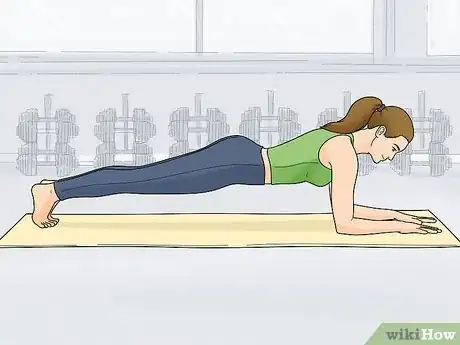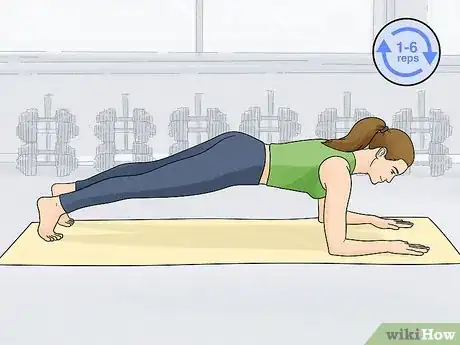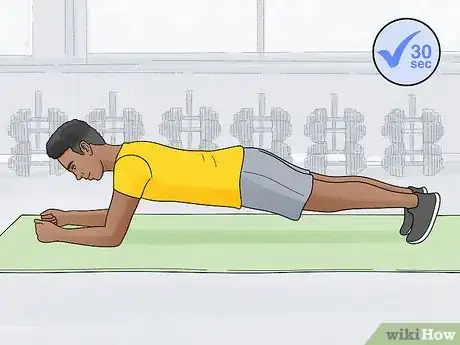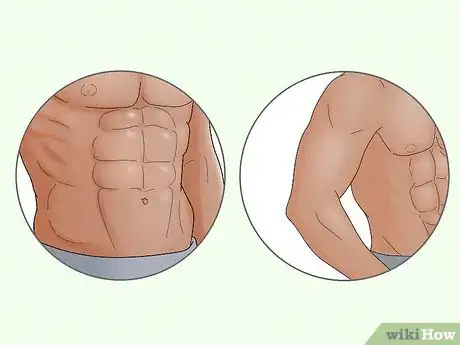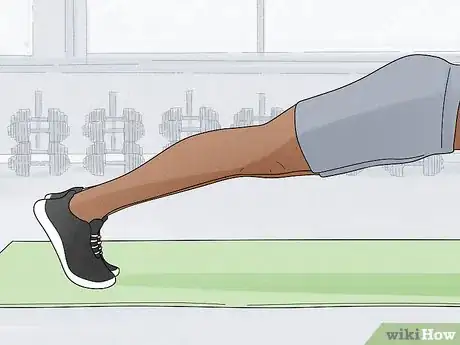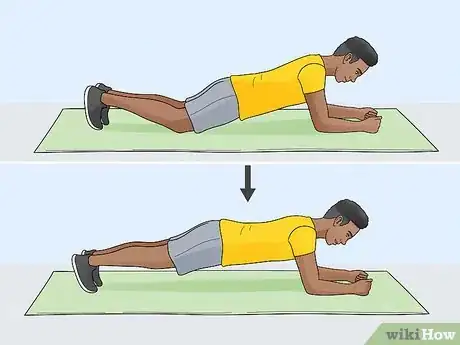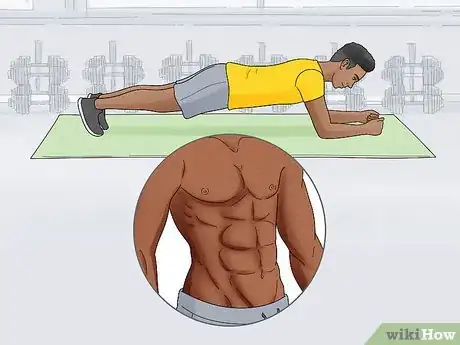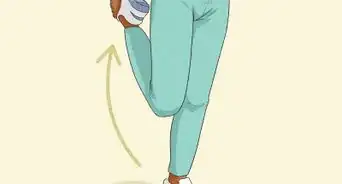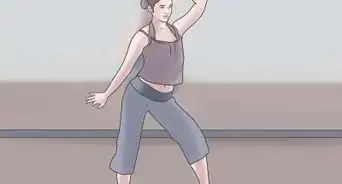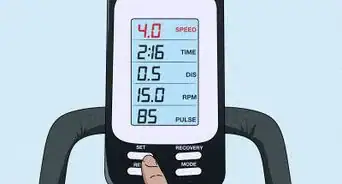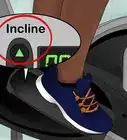This article was co-authored by Dean Theriot and by wikiHow staff writer, Hannah Madden. Dean Theriot is a Personal Trainer and the Owner of Timberline Fitness in Houston, Texas. With over 25 years of experience in the fitness industry, Dean specializes in personal, group, and sport-specific training. Dean holds a BS in Exercise Physiology from LSU. Dean combines resistance and cardiovascular training with pilates exercises for comprehensive workouts for his clients. His sport-specific training includes football, basketball, and baseball.
There are 10 references cited in this article, which can be found at the bottom of the page.
This article has been viewed 44,965 times.
The plank exercise is a great way to strengthen your core, your back, and your legs. As a beginner, you might not be able to hold a plank for very long, which is okay! We’ve answered your questions about the plank so you can set your own goals and work your way toward a stronger body.
Steps
How long should I hold the plank for best results?
-
1Aim for 10 to 30 seconds at a time. When you first start out, you might only be able to hold a plank for 5 to 10 seconds, and that’s okay! As you get stronger and your body gets used to the position, try holding it for longer and longer.[1]
-
2Hold a plank for 2 minutes maximum. Experts note that after 2 minutes, you’ve reached the maximum benefits that the plank can give you. If you can hold it for 2 minutes straight without wavering, you’re building muscles and burning calories to reach your fitness goals.[2]
- If you want to test your core strength, lie on a Bosu Ball with your tailbone in the middle of it. Hold the entire body suspended on the Bosu Ball parallel to the ground. If you cannot hold this position for at least 10 seconds, the core needs some work![3]
What happens if you do planks every day?
-
1You’ll strengthen your core. Planks are a great full body workout that target your abs and your core muscles. If you do planks every day, you’ll probably notice that your core muscles are stronger, which is great for balancing and holding your form during other exercises.[7]
-
2You’ll also strengthen your legs. In the plank, your glutes, quads, and hamstrings are also getting a workout. Squeeze your legs tightly in the plank position to get the full effect of this exercise.[8]
References
- ↑ https://www.health.harvard.edu/blog/straight-talk-on-planking-2019111318304
- ↑ https://www.health.harvard.edu/blog/straight-talk-on-planking-2019111318304
- ↑ Dean Theriot. Personal Trainer. Expert Interview. 22 January 2021.
- ↑ https://www.tn.gov/content/dam/tn/wfhtn/documents/how_to_do_a_plank_final.pdf
- ↑ https://www.health.harvard.edu/staying-healthy/try-this-move-for-better-core-strength
- ↑ https://www.health.harvard.edu/staying-healthy/try-this-move-for-better-core-strength
- ↑ https://www.besthealthmag.ca/article/plank/
- ↑ https://www.ahealthiermichigan.org/2013/07/31/the-exercise-benefits-of-the-plank-position/
- ↑ https://www.health.harvard.edu/blog/straight-talk-on-planking-2019111318304
- ↑ https://www.acefitness.org/education-and-resources/lifestyle/blog/6327/plank-variations-5-plank-variations-to-strengthen-your-core/
- ↑ https://www.ahealthiermichigan.org/2013/07/31/the-exercise-benefits-of-the-plank-position/
- ↑ https://www.youtube.com/watch?t=20&v=em4gADvYvMA&feature=youtu.be
- ↑ https://www.youtube.com/watch?t=3&v=Rr1Xq5Hmg7A&feature=youtu.be
- ↑ https://www.acefitness.org/education-and-resources/lifestyle/exercise-library/32/front-plank/
- ↑ Dean Theriot. Personal Trainer. Expert Interview. 22 January 2021.
